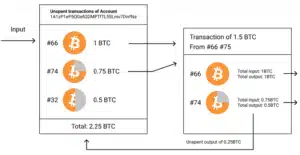What’s the Difference between MLOps and DevOps?

Almost everyone in the IT industry has heard of machine learning by now, but it’s no longer simply a gimmick for dazzling presentations. The industry has begun to apply machine learning to major projects as its use becomes more practical and less theoretical.
We’ve already passed the point of proof in 2022. It’s now a question of how to create a successful machine learning project and reliably deploy it in production.
This is where MLOps comes in. If you’ve ever worked on a typical software project, you’ve probably heard of MLOps, which is related to DevOps. Engineers and data scientists can iterate on machine learning projects with a defined process if we examine these words and their connection in further detail. If you or your business needs cloud security posture management, you can feel free to contact our company.
Table of Contents
What are MLOps and DevOps?
DevOps is a collection of procedures aimed at reducing the time it takes to design a system and deliver high-quality software on a regular basis. MLOps, on the other hand, is the process of making machine learning applications and processes more efficient and scalable. When a piece of software is placed in a repeatable, fault-tolerant process in MLOps, the program also includes an element of machine learning.
For machine learning applications and projects, you may consider MLOps to be a subset of DevOps.
Which DevOps Cycle is best?
Most successful IT initiatives use DevOps, which aims to reduce the time between writing code, building it, and deploying it. This gives teams the ability to roll out new features more quickly, allowing them to complete projects more quickly and with a better result. However, teams are hampered by manual activities, an inability to test, and ultimately, unsafe production deployments when they lack adequate DevOps procedures.
To ensure the success of a DevOps project, the following five pillars should be included in the cycle:
- Eliminate divisions within a company: Responsibility and ownership are shared.
- Accept the fact that you’ll fail: Risk and iterative development should be embraced.
- Slowly but surely, implement changes: Reduce the risk of failure by moving rapidly with fewer iterations.
- Use automation and tools to your advantage: Make use of software to streamline manual chores
- Everything should be measured: Make it clear what success means to you and how it will be judged if you want to achieve it
Bringing together development and operations decreases the number of silos. This is done by conducting code reviews amongst teams so that they may work together more effectively. The iterative approach of developing, building, and deploying in tiny batches to continually verify and resolve issues is shown by the circular structure of this integration. It’s best to use technologies such as Jenkins and Git integrations to automate this process. Teams keep an eye on the project to see whether it’s on track to satisfy defined success criteria.
As with the notions outlined above, machine learning is still very much a work in progress. Machine learning applications benefit greatly from the attributes of DevOps. Compare a DevOps and an MLOps pipeline using this subset relationship as a frame of reference for comparison.
A Comprehensive Analysis of the DevOps vs. MLOps Process
A code-validate-deploy cycle is part of both the DevOps and MLOps processes. Additional data and model phases are needed to build/train a machine learning model in the MLOps pipeline (see diagram below). This implies that MLOps, like conventional DevOps, has a few subtleties for each part of the process that are different.
In most situations, “data” and “model” refer to the labeling, data transformation/feature engineering, and algorithm selection processes that are involved in data mining.
Most machine learning efforts in industry nowadays use supervised algorithms. At the sake of model training, this implies they have an endpoint (or label) to aim for. Adding the target to a block of data records and using this as a training set is called data labeling.
If a model relies on data in a certain format, then data transformation/feature engineering is required. The kind of prediction issue you’re trying to solve has a lot to do with the method you use.
According to CRISP-DM, the most widely used approach for data science initiatives in 2022, this follows the CRISP-DM process model.
At a high level, “Dev” and “Ops” are quite similar. In the parts that follow, we’ll go through the details of the distinctions at a more fundamental level.
Development with Continuous Integration/Continuous Delivery.
There are two distinct interpretations of the word “development.”
Code that builds an application or user interface is usual on the DevOps side of the equation. Afterwards, the code is packaged into an executable (artifact) that is subsequently deployed and tested. Ideally, this process is automated and continues until you have a finished product.
A machine learning model is being built or trained using MLOps. Serialized files that can be fed with data and generate inferences are the output artifact here. The test data would be compared to the trained model to see how well it performs. Similar to the last example, this is a recursive process that continues until the model reaches a particular threshold of performance.
IT-Outpost is ready to perform cloud security posture management for you.









